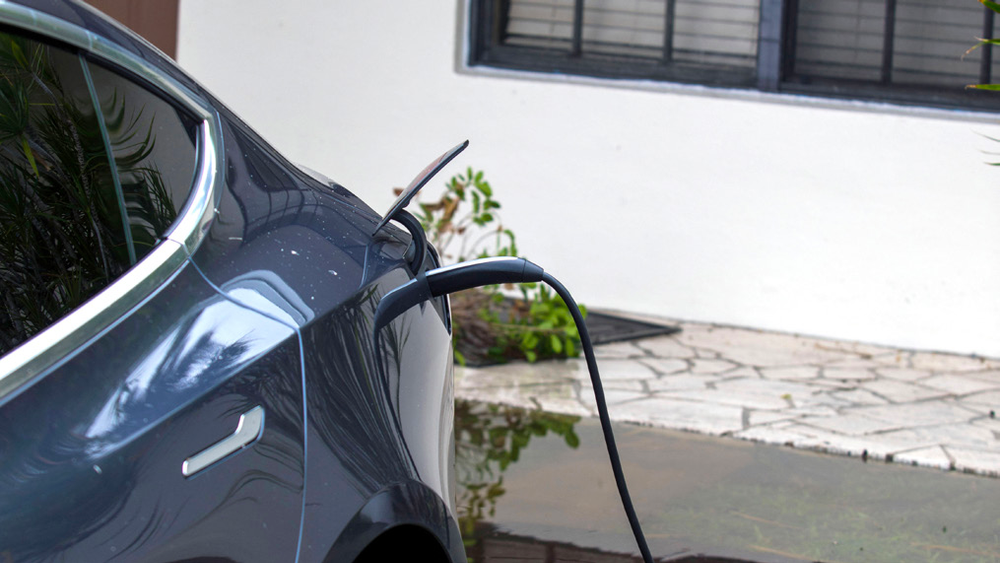
By Austyn Gaffney and Brad Plumer
Florida officials cautioned residents to relocate their electric vehicles from areas at risk of flooding in advance of Hurricane Milton to prevent the possibility of the cars igniting after prolonged exposure to saltwater.
“Keep electric vehicles and lithium-ion batteries away from floodwaters and storm surges,” urged the Facebook page for Hillsborough County, which includes Tampa.
Electric vehicles are equipped with lithium-ion batteries, which are also present in e-bikes, scooters, wheelchairs, golf carts, electric lawn equipment, and cordless tools. Submergence in saltwater can result in some of these batteries igniting once floodwaters recede.
While it is a relatively uncommon issue, the danger is significant.
Last month, Hurricane Helene was associated with about three dozen electric vehicle fires, one of which resulted in the destruction of a home. Over 254,000 electric vehicles were registered in Florida as of late 2023.
What causes batteries to catch fire during floods?
When saltwater infiltrates the interior of a lithium-ion battery, it can create a pathway for electricity to flow between the positive and negative terminals, resulting in a short circuit and heat generation.
In some instances, this heat can initiate a thermal runaway effect within the battery; the heat from one cell can begin to melt plastic separators between nearby cells, causing further shorting and even more heat generation. The outcome can be a fire that persists for hours and is difficult to extinguish.
While automakers make their lithium-ion batteries with water resistance, prolonged submersion in saltwater can lead to wear or corrosion that permits saltwater entry, potentially igniting a fire.
“This isn’t a concern for freshwater immersion” resulting from heavy rains or river flooding, stated Albert Gore, executive director of the Zero Emission Transportation Association, a trade organization. “But in areas prone to saltwater flooding and storm surges, it’s a risk to keep in mind.”
How secure am I?
Following Hurricane Ian’s impact on southwest Florida in 2022, over 3,000 electric vehicles were affected by flooding, with only 36 reported fires, according to a January report from Idaho National Laboratory.
“It’s not extremely common,” remarked Thomas Barth, head of a special investigatory branch focused on highway safety at the National Transportation Safety Board.
Researchers have been analyzing and examining batteries that ignited after being flooded with saltwater to comprehend the underlying reasons, which may help manufacturers prevent future incidents.
“We’ve spent a century improving the safety of gasoline-powered vehicles, and we’re just over a decade into mass production of EVs,” commented Alan Taub, director of the Electric Vehicle Center at the University of Michigan. “Such events are rare, but they get a lot of attention.”
How can I safeguard my vehicle?
If you find yourself in a hurricane’s path, you can evacuate using your electric vehicle just like you would with a gasoline car. In this case, ensure your car is fully charged before departure.
If you’re stationary but suspect potential saltwater flooding or storm surge where your electric vehicle is parked, reduce its charge to 20% or 30%. A lower charge minimizes the energy available to cause thermal runaway.
Subsequently, relocate your car to a less likely flood zone, such as the upper floor of a parking garage. If that’s not feasible, park it at least 50 feet from flammable structures like homes, garages, or dense trees.
“If the worst occurs, it’s just a vehicle you may lose,” said Greg Less, director of the University of Michigan’s Battery Lab.
My EV was submerged. What should I do next?
If you suspect your EV was submerged in floodwaters, refrain from driving it, even if it appears unharmed. Fires can ignite hours, days, or even weeks after the waters recede.
Reach out to the manufacturer for an inspection. Specify that your vehicle was submerged and needs an evaluation for flood damage. Often, a compromised electric vehicle will require towing on a flatbed truck for proper assessment.
“Despite what may seem like alarming warnings, we continue to believe EVs are safe for both driving and ownership,” stated Less, who operates an electric vehicle.
Are battery fires a concern for firefighters?
Electric vehicles aren’t the sole fire risk during disasters. Gasoline vehicles also can catch fire. However, electric vehicle fires require specialized handling.
Firefighters must direct water precisely around the battery to mitigate heat. “If you don’t target it correctly, no amount of water will prevent the battery from reigniting,” explained Andrew Klock, senior manager at the National Fire Protection Association.
The association has trained approximately 350,000 firefighters in how to extinguish electric vehicle fires, but with around 1.2 million firefighters in the country, more need instruction, he noted.
